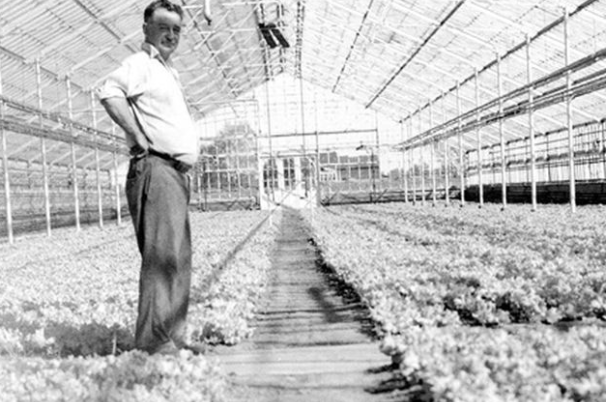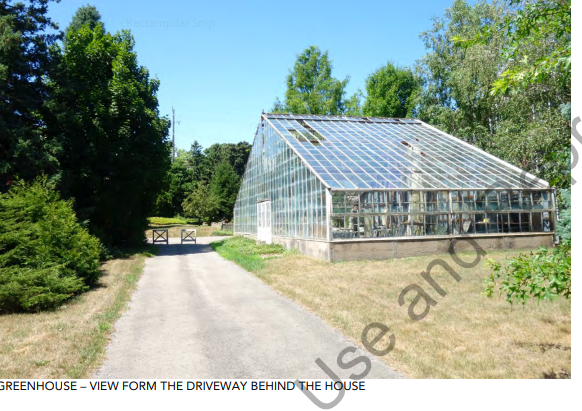It got a little complicated and a bit messy.
Burlington’s Committee of Adjustment struggled for two hours this week to deal with a severance application for a historic property in Aldershot, but controversy soon arose and the decision was deferred to a later date.
The discussion was about the property at 977 Unsworth Avenue, known as the George Unsworth House, familiar to most Aldershot residents. The building is on the city’s Municipal Register of Cultural Resources, but is not in fact protected with a formal heritage designation under the Ontario Heritage Act.
The new owner wants to divide the property into three lots, keeping the historic home in the centre lot.

The problem that emerged at the meeting was related to the desire to confirm a formal historic designation for the home. All the experts who have handled the file so far, including the Heritage Advisory Committee, heritage consultants and the Planning Department, supported formally designating the home to protect its historic and architectural integrity. These recommendations, however, were never translated into a requirement or condition for the severance, and most of the members of the Committee of Adjustment were not happy about it.
When a neighbour questioned whether the Unsworth House could still be torn down, Committee Chair John Vice, who also has experience on the city’s Heritage Committee, offered some initial reassurance.
“It’s almost a certainty that if anyone chose to attempt to demolish that house, it would be designated by council, whether or not the owner liked it, and that would protect the house in perpetuity.”
In fact, the owner did tell the committee that he was willing to go along with a heritage designation.
Later, however, the owner and his representative confused the committee by saying that the plan was to designate only the front façade of the home and also that they had no desire to initiate the designation process themselves. They expected the city to do it.
The lack of clarity and assurance about historic designation sparked ongoing debate.
“I’m not getting a good feeling from the applicant on his commitment to actually designate the property,” said committee member Jim Riddle.
“There are questions we can’t answer at this point on timing, cost, and heritage designation,” said member Alexandra Rawlings.
The committee also raised concerns about the existing zoning, which potentially could permit two-and-a-half storey homes to be built on the newly created lots. (The height issue had been raised earlier by the neighbour.)
The primary concern, however, remained the lack of assurance that the home would be formally designated and therefore protected from destruction.
The owner tried again. “We’re entirely sympathetic to having it designated as a heritage property. I don’t know all the rigmarole that’s involved with that. I understood that was something that was driven by the City of Burlington.”
That was not enough to satisfy the committee. It was clear the members wanted more certainty.
“We are sympathetic to the application [for severances] but…we’re concerned there are no current guidelines for the buildings you might be allowed to build [their height] and the heritage component is at best a recommendation at this point,” concluded Chairman Vice.
In the end, the committee felt it needed clarification from the city about heritage designation, zoning, and legal matters. The severance application was deferred.
The George Unsworth House was built in 1932 in the Neo-Tudor style.
“The subject dwelling is a 2-storey Arts & Crafts style building that is constructed with high quality materials including cut and carved stone, cast stone, textured stucco, slate and copper. Notable features include the high hipped roof with multi-coloured slate tiles, the front entrance with a paneled wood door and decorative cast stone surround, the 2-storey octagonal bay with a crenellated parapet, and the open porch on the north side of the house that has a roof that is integrated into the roofline of the house and supported by stone pillars,” according to a 2014 heritage report.
George Unsworth was well known in Aldershot. He established a successful 13-acre farm and greenhouse business, growing tomatoes, lettuce, and cucumbers.

“In an attempt to lengthen his growing season, George decided to construct cold frames and germinate the plants prior to the growing season in southern Ontario. These small-scale greenhouses were the predecessor to his first full sized greenhouse, constructed in 1900. The greenhouse allowed for his vegetable growing enterprise to expand at such a rate that he eventually held a small cluster of greenhouses. Unsworth’s specialty was vegetables, particularly tomatoes, cucumbers and lettuce, the former of which were enjoyed by the King and Queen of England during a visit in 1939.”
The report concluded that the home “has historic value because it was built for George Unsworth who operated a successful produce farm that included 3 acres of glasshouses at its height. George was the son of Albert Unsworth who purchased the land in 1882 and the grandson of Giles and Anna Unsworth who came to the area from Liverpool in 1848. It is one of a pair of houses in a similar style that were built for the Unsworth family.”





